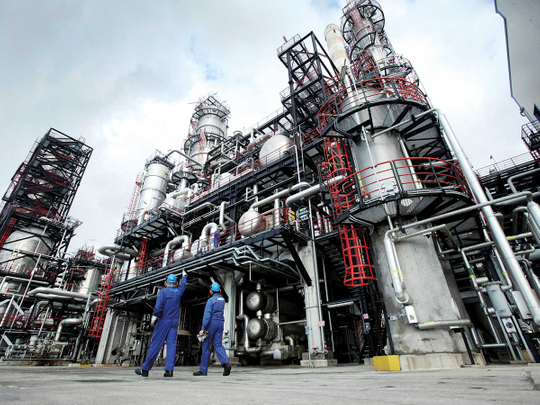
Abu Dhabi
The sustained US-China trade war, which saw further tariffs being announced last week by both countries, will continue to have a negative impact on the oil market, analysts said.
On Friday, China said it would start placing 5 to 10 per cent tariffs on over 5,000 American products worth $75 billion in retaliation against the US, with the tariffs set to come into effect in two separate batches in September and December. Among the listed products included US crude oil imports to China. US president Donald Trump in response tweeted out that tariffs already in place on Chinese products would be increased from 25 to 30 per cent starting in October, and that a new round of tariffs scheduled for September would now also be increased from 10 to 15 per cent.
The tit-for-tat measures saw oil prices taking a dip with Brent closing at $59.34 and West Texas Intermediate (WTI) on $54.17 for the week.
“The latest escalation of the US-China trade war helped to sink oil markets at the end of the week with both Brent and WTI futures declining on Friday. Over the course of the week WTI fell almost 1.3 per cent,” said Edward Bell, commodity analyst, Global Markets and Treasury, Emirates NBD. “As markets are likely to adopt an increasingly risk-off tone as the fallout of the US-China trade war becomes clear, we would expect to see the trajectory for crude set more and more by non-oil specific headlines in the coming weeks,” he added.
Bell said the new tariffs on US crude oil imports to China would come to an additional cost of $3 per barrel, which could lead to Chinese refineries looking elsewhere for future purchases. “A 5 per cent tariff on WTI bound from Houston represents nearly $3 per barrel, cutting into margins for Chinese refiners already negatively affected by lower values for fuel oil.
“China had seen a rapid pace of growth in imports of US crude, taking an average of almost 400k bpd in the first half of 2018 compared with 222k bpd on average in 2017,” he added.
“China has used oil flows as a trade negotiating tool — imports almost fell to 0 in the second half of 2018. Chinese refineries may seek to displace US barrels and push US crude to alternative destinations or force prices lower to compensate for the higher rates,” he said.
Bell also highlighted weakening global economic forecasts as another factor that could weigh down on oil prices.
“The data of some other economies has been pretty soft, Germany looks like it’s going into recession as of the third quarter of 2019, and so that would be sending weak signals for demand growth in European economies.
“Then we look at the kinds of actions we’re seeing from central banks far removed from the oil market today — Indonesia cutting interest rates, actions being taken by banks in South Korea and so on — Asia is sending signals about a softening global economy.
“This weakness in the global economy can have an impact on demand beyond the trade war signals as already reported by the International Energy Agency and Opec as well,” he added.












